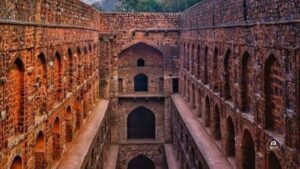Najafgarh, nestled in the South West Delhi district of Delhi amidst the picturesque landscape, offers a unique blend of history, culture, and natural beauty. This town, which shares its territory with Gurgaon and Bahadurgarh in Haryana, has a fascinating past dating back to the Mughal era. It derives its name from Mirza Najaf Khan, the commander-in-chief of the Mughal Army under Emperor Shah Alam II.
The story of Najafgarh begins with Mirza Najaf Khan’s strategic vision to establish a military outpost to protect Delhi from British, Rohillas, and Sikhs. He marched several kilometers from the capital city of Shahjahanabad and constructed a robust fort in the suburbs, settling a small number of Mughals here. This fort, known as Najafgarh, became a symbol of strength and resilience.
Aside from its historical significance, Najafgarh captivates visitors with its natural beauty. The town is surrounded by lush green fields, creating a serene and peaceful ambiance. Nature lovers will appreciate the opportunity to immerse themselves in the scenic beauty of the countryside, away from the hustle and bustle of city life. Taking a leisurely stroll along the banks of the Najafgarh drain, which flows through the town, is a calming experience that should not be missed.
Additionally, Najafgarh boasts a vibrant local culture that showcases the essence of rural life in India. Interacting with the warm and welcoming locals gives travelers a chance to gain insights into the traditions, customs, and daily lives of the people residing in this part of Delhi. Exploring the local markets offers a unique shopping experience, where one can find traditional handicrafts, textiles, and delectable street food.
Visiting Najafgarh provides a refreshing change of pace from the crowded city center, allowing travelers to connect with nature and delve into the rich heritage of the region. Whether you are a history enthusiast, a nature lover, or simply seeking an offbeat destination, Najafgarh has something to offer to every visitor.




